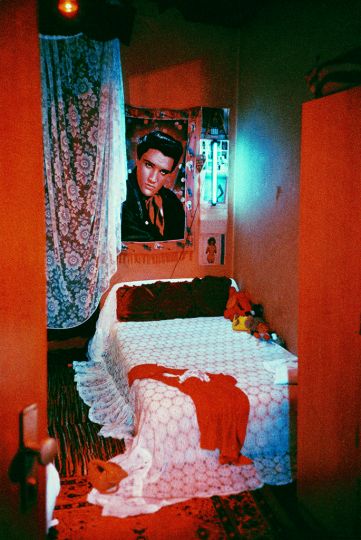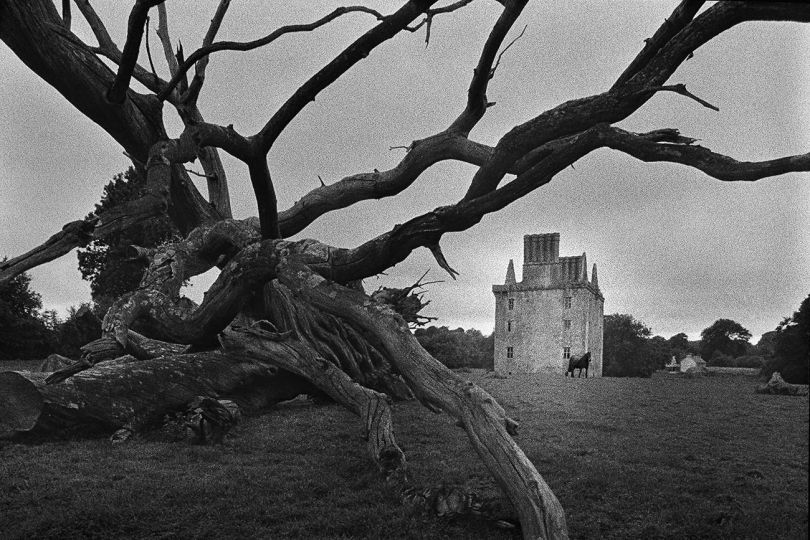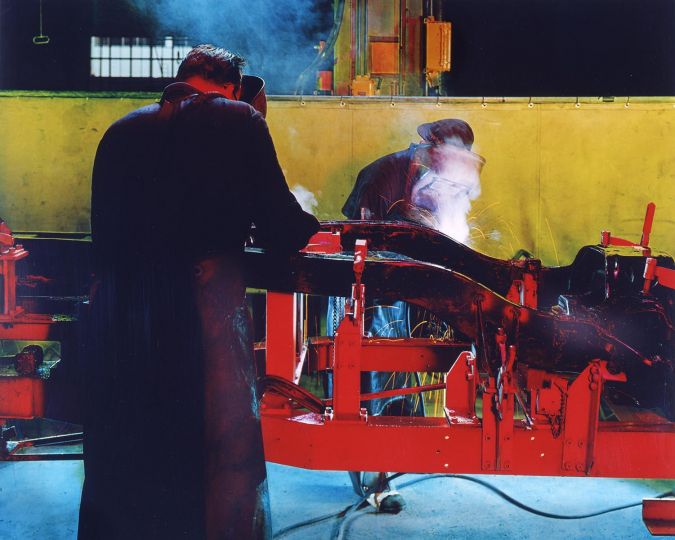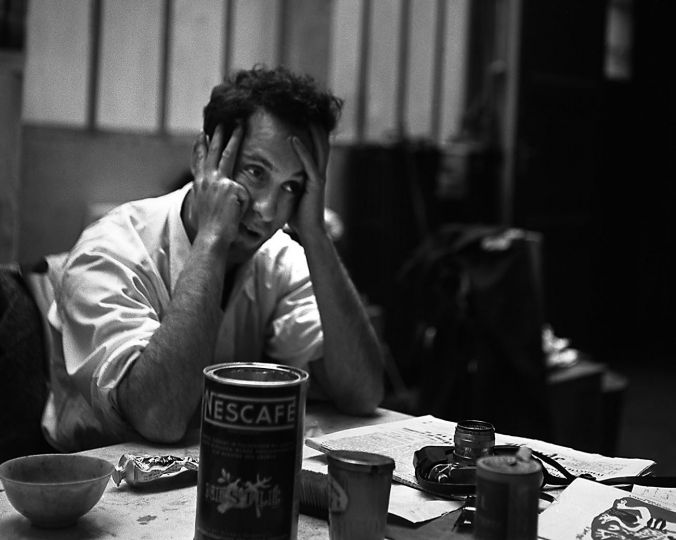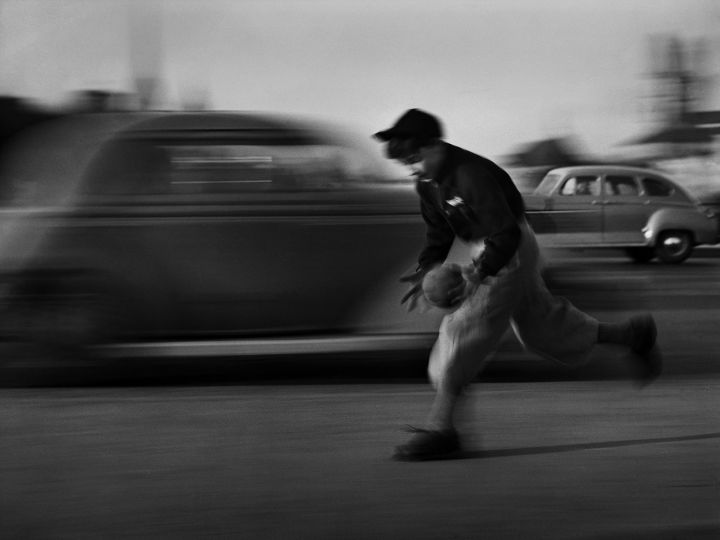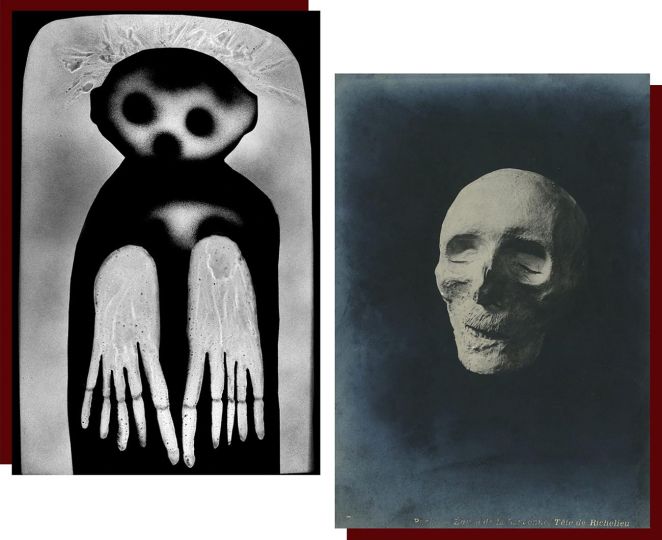This conversation was held on March 3, 2011
Denis Darzacq : Hello Jean-Christian Bourcart, photographer and filmmaker, your artistic process is quite unusual, both diverse and unforgiving. Can you talk to us about what you do?
Jean-Christian Bourcart: I am a cultural worker. I record and organize images, sounds, and words that will, I hope, find their place on today’s artistic and geopolitical scene.
DD: Your work is very diverse: documentaries, for instance, including “Camden” that we saw at the Rencontres d’Arles two years ago, and fiction films such as “In the Memory of the days to Come”. How do you proceed? How do you stay focused?”
JCB: Today we are living in a world where distribution has changed and technological explosions allow us to work more intensely, intuitively, and cheaper. We are lucky to be able to use different types of distribution networks, keeping our productions from being compartmentalized. With global expansion and technological progress, a feature film costs ten times less to make. I am just trying to take advantage of these new possibilities. I am interested in experimenting with the limits of my freedom, trying whatever interests me. I try to avoid schools, companies, avoiding any sort of normal structure. I do what I want, going exactly where I have never been. They aren’t self-challenges, just desires. What will excite me, what will be interesting to do that I haven’t yet done? But also what is materially possible to do with my machines, my time, my resources. They are opportunities, meetings, that is how I was able to make “In Memory of the days to Come”. I had been working on a scenario for many years. Then I had a conversation with Bertrand Faivre. I told him my story, and he said let’s do it.
Or when, for “Camden”, I was talking to a friend who said: You have to get out, you stay home too much. What could I do? I had to go see people. So I went out to the street corner, I really had to push myself to get off my couch. I take my camera and think I should start taking pictures of people in the street, I get out and walk to the mall down the street and start talking to people: “Would you mind if I take your picture?” “Yes, cool!” Everything seems possible. But then what do I do?
So I decided to put a little danger into my life. I looked on the internet for America’s most dangerous city.
There is nothing standardized about that, it is a combat against a stylistically formatted life, and a search, a hunt: looking to see how far we can go and what work form is still acceptable. Or perhaps, what stylistic style is appropriate for which subject. I fight against the idea of the author, recognized for his technique, who has signature works thanks to his aesthetic style. I find that a bit old fashioned. Although I realize that public opinion is based on that: immediate recognition, like a brand: David Lachapelle, Martin Parr, Nan Goldin… I am taking a risk, I am not reaching out to the “general public”, I accept that.
But I hope that in the end, something will come out of my diversity and links will be made to tie my work together. We can see the connections, the bridges, what it is coherent, a subtle and complicated coherence. There are several different levels, different people, different moments, and an evolution.
Cohesion, you see, is like the Borgès story whose title I have forgotten. This guy who spends his entire life painting something that we can neither see nor understand, but little by little it becomes clear and we understand when he dies. It was an immense self-portrait.
Like many people, I talk about myself and that takes different shapes. But I also spend my time in hiding, all the time. Because the most important things can’t be said. We can only hint at them.
What I am most interested in is: “others and myself”. I fundamentally believe that there is no difference. That doesn’t exist, it is just a concept, an idea. It is called the ego and it is something we can do without. I try fundamentally to show that in my pictures. Self-portraits or of people in the street, it is not important. Regardless whether it is they or I, because they are I and I am them. Duality is just an invention of the human spirit, it has no validity beyond our brains.
DD: Then how do you judge the qualities of a picture, movie, or scenario?
JCB: By emotion, if people react, if they are moved, that is all. I am moved when I see the people in “Camden”, they move me, which is why I want to spend a lot of time there and do something with them, or film with other actors, or hang out in SM bars. It is successful when audiences are moved, a link is created and that is what’s most important. That is what we often forget, that there is no longer any separation. My work isn’t dry, I am a bit of a romantic.
DD: Are you sentimental?
JCB: Yes, I am sentimental and romantic. And I am also a real bully, you see.
DD: Do your senses determine your work or is there a well thought out schema?
JCB: First there is desire, then there is thinking, but the first is desire. Desire and fear.
DD: Can you talk to us about the last series of self-portraits that you did?
JCB: I think the tension that exists between one-self and others comes from the fact that we can’t see ourselves. That is the source. You look at others to better understand who you are, either by resemblance, or by difference. If I want to look at myself, either I’ll see myself partially, or I will see a reflection or an image. That is where the mystery lies. For this series, I shot my reflection on shiny black photographic paper. What was most interesting, what makes these pictures interesting, are the infamous half moons, the wrinkles in the sheet that photographers fear. They transform the paper’s surface into a warped circus mirror.

